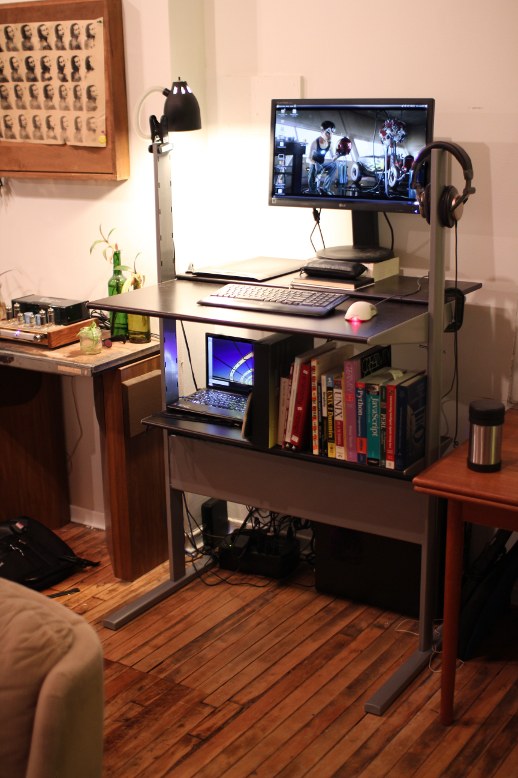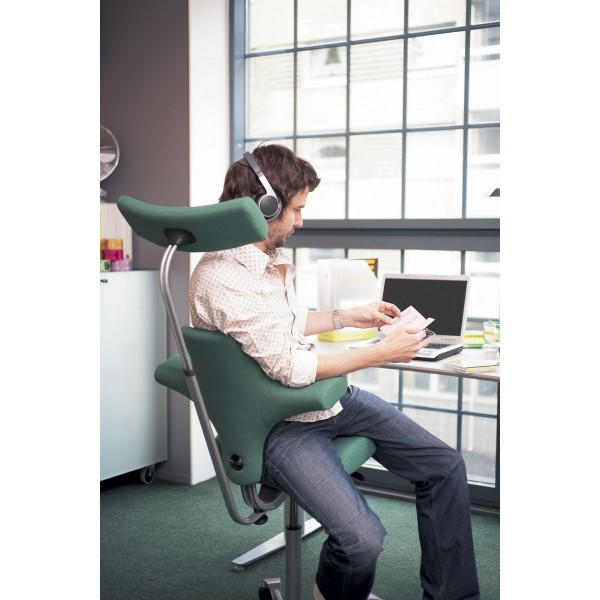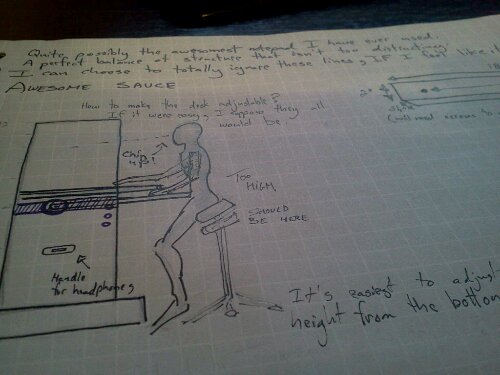A few months back I was shopping for a stool to perch on. “Perching” is a half sitting / half standing position that takes tons of strain off your lower neck/back and distributes some of the weight onto your legs, like a tripod. There are many reason’s not to sit around all day. Studying on my computer is a bit of a drag, especially when I go to points where I’m watching tutorial videos or doing reading research. Posture suffers greatly in these situations.
My plans to purchase a chair had fallen through and I needed a solution. I was staring at my desk for a few minutes before I realized the solution. “Hey Jeremy. You know that the chair is killing you, so why not give standing a try?” 30 minutes later I had reconfigured my desk to standing height and months later I’m still standing The photo above shows the result.
*UPDATE 2012-03-14*
Over my computer using history (20+ years) I’ve sat, leaned back, no back, too short and too tall. I’ve sat on stools that were about the height of dining tables and I’ve knelt down in contraptions that bring out my claustrophobia. I’ve even bounced around on a ball for a bit. One of my favorite chairs is the HÅG Capisco (pictured right).
In the end, I’m standing… or sometimes perching and I love it. While standing, I quickly notice when I’m leaning too far in and craning my neck/straining my eyes. My legs do get fatigued, but this acts as a constant reminder for me to shift my weight. I think it’s important to have the desk slightly lower than elbow height when standing straight. This allows your shoulders to drop (a major point of tension) and also gives you room to bend your knees. Of course, too low isn’t good either, as I this can cause issues also. Standing with locked knees does not promotemovement.
It’s easiest to just remember:
“The best posture is always the next one.” – Peter Opsvik (Norwegian industrial designer best known for his innovative and ergonomic chairs)
For a better understanding of chair ergonomics (“ergo-chair” sounds a bit like a contradiction), I highly recommend the book “The Chair“, by Galen Cranz’s. This University of California, Berkley professor also provides a bit of history, so you can understand exactly how the chair came into being. For a summary of some of the points illustrated in Galen’s book, check out What’s Wrong with the Chair.


